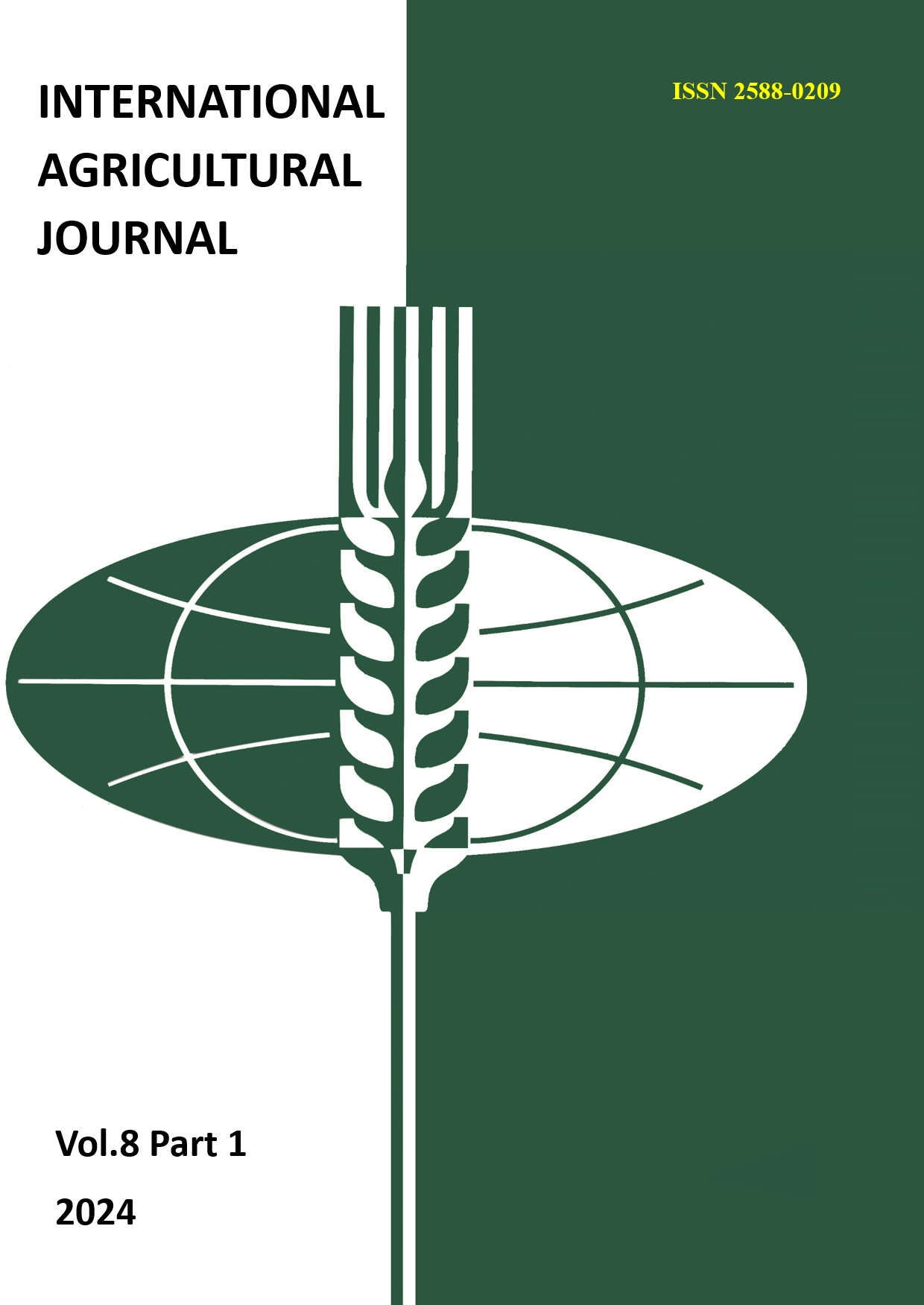INVESTIGATION OF THE LEVEL OF RESISTANCE TO COPPER SULFATE AND STREPTOMYCIN OF THE ISOLATES OF Erwinia amylovora WHICH CAUSE FIRE BLIGHT DISEASE IN PEAR (Pyrus communis) IN THE WESTERN REGION OF AZERBAIJAN
Main Article Content
Abstract
Fire blight caused by the pathogen Erwinia amylovora is one of the most serious bacterial diseases of fruit trees. The disease causes great damage not only to the crop of that year, but also to the plant itself. After favorable weather conditions, the yield during flowering is greatly reduced, in some cases it even ends completely. This reduction in fruit yield significantly affects the next year's yield. In susceptible host plants, the infection spreads through the tree so rapidly that once the tree becomes infected with the disease, it cannot be saved even with effective and immediate interventions.
Shortly after the first sign of infection appears, the bikti can die completely. Managing the disease is a very difficult process. The application of chemicals during the fight against the disease is not very effective. In addition, application of chemical substances causes disturbance of the ecological balance, residual damage in the plant and environment, and formation of isolates resistant to pesticides. In this regard, in recent years, more priority has been given to biological control in the management of the disease.
The study of Erwinia amylovora (Burr.) Winslow et al., which was found in pear (Pyrus communis) plant in the western region of Azerbaijan and caused fire blight disease. aimed to determine the level of sensitivity of isolates to copper sulfate and streptomycin.
Article Details
References
2. Anonim 2008. Zirai Mücadele Teknik Talimatı, Cilt:4, syf:71
3. Baştaş, K. K. ve Saygılı, H., 2008. Ateş Yanıklığı Hastalığı, Fire Blight, Erwinia amylovora. Bitki Bakteri Hastalıkları Kitabı S: 61-68 (Editörler: Saygılı H., Şahin F. and Aysan Y.)
4. Bora T, Karaca İ (1970). Kültür bitkilerinde hastalığın ve zararın ölçülmesi. Ziraat Fakültesi Yardımcı Ders Kitabı. Yayın No: 167, pp.43. Ege Üniversitesi, İzmir
5. EPPO (2013) PM 7/20 (2) Erwinia amylovora. EPPO Bulletin 43(1): 21-45.
6. Schroth, M. N., Thomson, S. V., and Moller, W. J., 1978. Streptomycin resistance in Erwinia amylovora. Phytopathology 69: 565-568.
7. Sobieczewski, P., Chiou, C. S and Jones, A. L., 1991. Streptomycin-resistant epiphytic bacteria with homologous DNA for streptomycin resitance in Michigan Apple orchards. Plant Dis., 75,1110-1113
8. Soylu EM, Soylu S, Kara M, Kurt Ş (2020) Sebzelerde sorun olan önemli bitki fungal hastalık etmenlerine karşı vermikomposttan izole edilen mikrobiyomların in vitro antagonistik etkilerinin belirlenmesi. Kahramanmaraş Sütçü İmam Üni. Tarım ve Doğa Derg. 23: 7-18
9. Vanneste LJ (2000). Fire Blight, The Disease and Its Causative Agent, Erwinia Amylovora, CABI publishing, New Zealand.
10. Zwet T, Keil HL (1979). Fire Blight A Bacterial Disease Of Rosaceous Plants. United Departmen of Agricultural handbook: 510 Washington, USA.

